According to the covenant of Heinrich the Navigator. Path to India: Vasco da Gama, Cabral and others
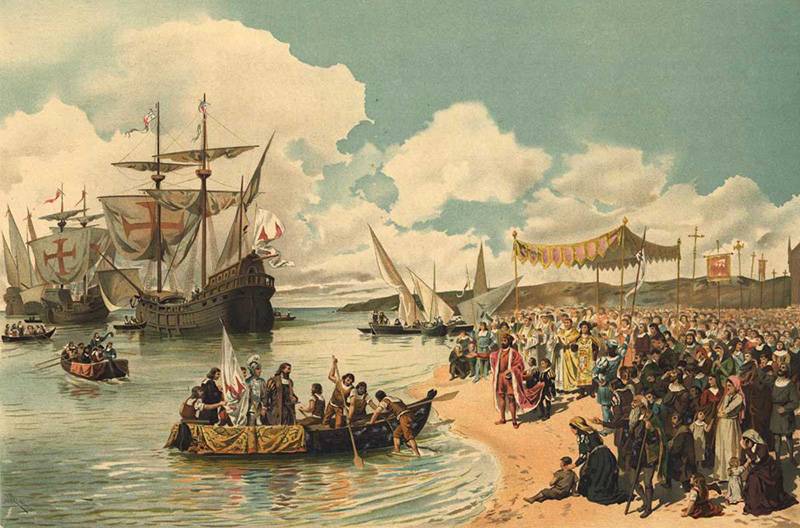
In the shadow of a powerful neighbor
The Portuguese conquered themselves for a long time under the hot Pyrenean sun - like their closest Christian neighbors, the Spaniards, the main obstacle in this painstaking occupation was the Moorish states. By the second half of the 13th century, the Portuguese had managed to consolidate the south-west of the peninsula and look around. The small kingdom had few sources of wealth, and there were plenty of neighbors with whom it was necessary to keep oneself on guard. And these were not only the Moors — the nearby Christian kingdoms were transformed from allies into enemies with the ease of a blade snatched from the sheath.
Rather modest own revenues barely allowed to maintain stockings, which, because of the far from peaceful and calm environment, had to be worn in the form of chain mail. Trade remained, though the craft was not as noble as the war with the infidels, but it was very profitable. However, there were not so many ways for successful expansion of trade in the Mediterranean region, especially for a not very large, not very strong and powerful state. Trading business with Eastern countries was firmly held in their tenacious hands by maritime republics-corporations - Venice and Genoa, and they did not need competitors. Their colleague, the Hanseatic League, controlled the sea routes in the Baltic and in a large area of Northern Europe.
There was a vacant path to the south - along the little-studied African continent, and, of course, stretched to the west boundless frightening ocean, reverently called the Sea of Gloom. His time has not yet come. The Portuguese began to actively develop everything that was somehow connected with the sea. Experienced captains, sailors and shipbuilders were recruited among the Italians who were well-versed in the salted handicraft of Italians, first of all immigrants from Genoa and Venice. In Portugal, began to build their own shipyards and ships.
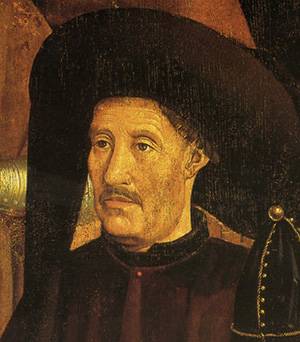
Soon the invested forces and funds began to gradually, gradually, give visible results. In 1341, Portuguese navigator Manuel Pesano reached the Canary Islands. In August 1415, the army and fleet of King Joan I seized Ceuta, thereby creating the first stronghold on the African continent, which was of major strategic importance. The military expedition was attended, among others, by the five sons of the monarch. The third son of King Enrique showed himself most vividly and bravely.
After many years, he will receive the respectful nickname of the Navigator. The contribution of this person to the formation of Portugal as a great maritime power is difficult to overestimate. In 1420, Prince Enrique became the Grand Master of the Order of Christ and, using the resources and capabilities of this organization, built the first Portuguese observatory on Cape Sagres. The naval school was also located here, which trained personnel for the growing fleet. After reading the travel notes of the Italian Marco Polo, Prince Enrique ordered to collect all the available information about the distant and rich India, the achievement of which he set the highest priority of Portugal.
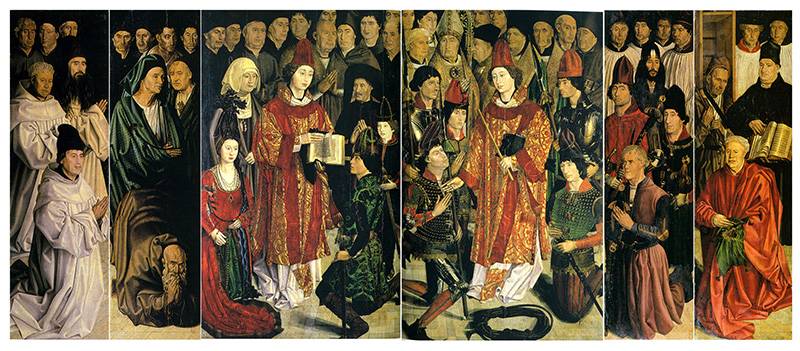
In addition, the prince intended to conquer Morocco in order to consolidate the situation in Africa. As a man of diverse knowledge and interests, Enrique had a good understanding of the Trans-Saharan trade caravan system, which was widespread in the days of Rome and Carthage. In the political realities of the 15th century, access to the wealth of Western and Equatorial Africa was denied by the presence of the extremely hostile Muslim states of the Levant. Possession of Morocco or Mauritania would allow Portugal to cut through a kind of window into Africa.
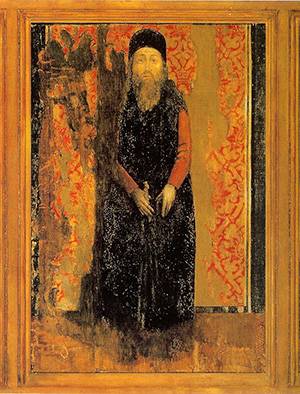
However, such strategic undertakings, which required enormous resources, which the small kingdom had just barely enough, began to slip. One after another, military expeditions failed - in 1438, even the youngest son of the king, Fernando, was captured by the Moors, and he died there without waiting for his release.
The vector of foreign policy efforts has finally headed towards the achievement of rich sources of income from the sea trade. In 1419, the Madeira Islands were opened by the Portuguese, in the 1427, the Azores discovered again under the control of Lisbon. Step by step, the Portuguese moved to the south - along routes and waters long forgotten in Europe. In 30 – 40-ies. The 15th century caravels, equipped with an oblique Latin sail, whose widespread introduction is also attributed to Prince Enrique, force Cape Bochador, and later reach Senegal and Gambia, the most remote lands by the standards of that time.
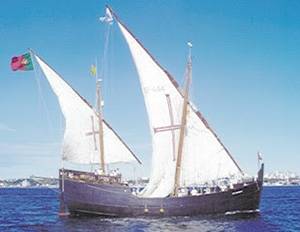
Entrepreneurial Portuguese dexterously organize trade with the local population - a stream of ivory, gold, incense and black slaves rushing towards the metropolis. Trade in the latter soon became so profitable that a state monopoly was declared to concentrate profits on it. Fortified territories are established on the newly discovered territories, which were strongholds.
While the neighbors on the peninsula, Aragon and Castilla, were preparing for the final solution of the Mauritanian question, a victorious the completion of the reconquista and the elimination of the completely degraded emirate of Granada, Portugal gradually grew rich. Prince Enrique the Navigator died in the year 1460, leaving behind him a sea power that was getting stronger, ready to challenge the Sea of Gloom, which almost inspired almost mystical horror. And although during the life of this outstanding statesman, Portugal did not reach the shores of mysterious India, the geopolitical impetus given to them made it possible to carry out this task until the end of the century.
The first of many. Vasco da Gama
The death of Prince Enrique did not in any way stop the Portuguese expansion. In 1460 – 1470's, we managed to gain a foothold in Sierra Leone and on the Ivory Coast. In 1471, Tangier fell, significantly strengthening the position of Lisbon in North Africa. Portugal is no longer a European backwater - success in navigation and trade makes this small country widely known. Fabulous profits and profits attract rich Venetian and Genoese merchants to equip expeditions to Africa, while the neighbors are Spaniards, being tied up by Reconquista, they are envious of their own colonies. However, far India and other exotic eastern countries are still far away and hardly distinguishable from myths and fables, which are told with might and main in Europe’s port marrows.
At the end of 70 - the beginning of 80 of the 15th century, the royal court at first of His Majesty Afonso V the African, and then of João II, was vigorously besieged by all available means by a young persistent Genoese named Cristóbal Colón. His relentless thought, which he tried to convey to the consciousness of the Portuguese monarchs, was to reach India by sailing westward. Colon's conviction was based on the opinion of the cartographer Paolo Toscanelli and the idea of the sphericity of the Earth, which was gaining momentum.
However, the rulers of Portugal, not without reason, considered themselves experts in the maritime business, and with a still complacent arrogance, they advised the Genoese to cool a little and do something more useful. For example, to test the strength of the patience of neighbors - King Ferdinand and Queen Isabella. In the end, not having achieved understanding in Portugal, Cologne went to neighboring Spain, where preparations for the mastery of Granada were in full swing.
At the end of 80-xx. In the 15th century, Portugal took another big step towards achieving the goal set for it by Enrique the Navigator. In 1488, the expedition of Bartolomeu Dias opens far to the south a cape which received the name of the Cape of Good Hope by the light hand of King João II. Dias discovered that the African coast is turning to the north - thus he reached the southern point of Africa.
However, even before the successful return of Dias to Portugal, King Joan II gained additional confidence in the correctness of his search strategy for India. In 1484, the leader of one of the tribes living on the coast of the Gulf of Guinea was brought to Lisbon. He said that in the 12 months the overland journey to the east is a big and powerful state - obviously, it was about Ethiopia. Not limited to information received from the native, who could and instill for solidity, the king decided to conduct a real reconnaissance expedition.
Two monks were sent to Jerusalem - Pedro Antonio and Pedro de Montaroyo - in order to gather valuable information in this city, which was a crossroads where you could meet pilgrims of different faiths. Arriving in Jerusalem, the monks were able to make contact with their fellow monks from Ethiopia and obtain some information about the countries of the East. To penetrate further into the Middle East, the Portuguese intelligence officers did not dare, because they did not speak Arabic.
Satisfied with the successful mission of the monks, the pragmatic João II sent new scouts along the same path. Unlike their predecessors, Pedro de Cavillian and Gonzalo La Pavia spoke Arabic fluently. Their immediate mission was to penetrate Ethiopia and reach India. Under the guise of pilgrims, which in abundance were sent to the East, both royal intelligence officers managed to freely reach the Sinai Peninsula. Here their paths diverged: de Kavillian through Aden, using regular sea traffic of Arab merchants with Hindustan, was able to reach the coveted India. He visited several cities, among which were Calicut and Goa.
It is possible that he was the first Portuguese, who managed to penetrate into this part of the world. Back de Kavillian also returned through Aden and arrived in Cairo. In this city he was already awaited by the envoys of King John II - two inconspicuous Jews, to whom the traveler handed a detailed account of everything he saw and heard. De Kavillian urged him to convey to the king that India could be reached by moving along the coast of Africa. His comrade in the intelligence mission, Gonzalo la Pavia, was less fortunate - he died far from his homeland in Egypt.
Not stopping there, Pedro de Cavillian decided to penetrate into Ethiopia. He successfully coped with the task and so fell to the court of the local ruler that, being gifted with estates, positions and honors, he married and stayed there. In 1520, the envoy of the Portuguese king in Ethiopia met de Cavillan in the Negus retinue. According to other reports, the Portuguese were deliberately prevented from returning to Portugal in order to prevent information leakage.
The direction in which the path to India should have been sought was, in principle, in Lisbon, no longer in doubt. And soon they decided on the candidate who would head this enterprise. The competence of such an experienced navigator, as Bartolomeu Dias, was well known, however, perhaps, his ability as a manager caused some doubts. Upon reaching the southern tip of Africa on his ships, the crews came out of obedience, demanding the return to Portugal. And Diash could not convince his subordinates. We needed a leader who was less inclined to compromise and persuasion.
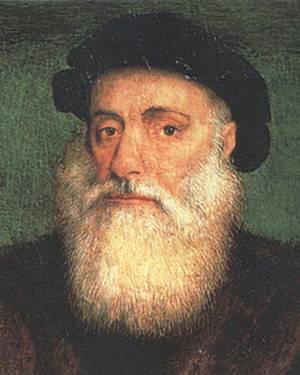
In 1492, French corsairs seized a Portuguese caravel loaded with valuable cargo. It was up to the 32-year-old little-known nobleman named Vasco da Gama to carry out retaliatory measures that were to push the French king to some thoughts about the behavior of his subjects. On a high-speed ship, he visited the ports of Portugal and on behalf of João II captured all the French ships in the waters of the kingdom. Thus, João II could easily threaten his French counterpart with the confiscation of goods, if he did not punish the corsairs. Vasco da Gama brilliantly coped with a complex assignment.
The successful take-off of an enterprising career and an extremely tough Portuguese who was able to behave very toughly fell at the time when the Iberian Peninsula was agitated by the news of the return of the “visionary” Cristobal Colon on a ship loaded with all sorts of exotic wonders. The Genoese managed to enlist the support of Queen Isabella and finally set out on her legendary voyage to the West. Before his triumphant return to Spain, Cologne was awarded a solemn audience with the Portuguese king.
The discoverer colorfully described the lands he discovered, numerous natives, several of whom he was carrying to show to his patrons. He claimed that the new territories were very rich, however, the amount of gold brought from overseas was not very large. Cologne, with his characteristic perseverance, asserted that he had reached, if not India, then the nearby territories, from which the country of gold and spices was within reach. The pragmatic Portuguese monarch João II and his numerous close associates, among whom was Vasco da Gama, had every reason to doubt the correctness of the conclusions made by the Genoese.
Everything he said was not much like the information about India that had been accumulated in the Portuguese court. There was no doubt that Colon had reached some unknown land, but with a high degree of probability they had nothing to do with India. While the Genoese deservedly tasted the fruits of his triumph and prepared for a new, much more numerous expedition overseas, in Lisbon they decided to act without delay. The activity of Spain, which has now become not only a dangerous neighbor, who expelled the Moors for Gibraltar, but also a competitor in maritime and trade affairs, was very disturbed by the highest political circles of Portugal.
To smooth out the sharp edges in the relations of the two Catholic monarchies, with the mediation of the Pope of Rome in June 1494, the Tordesillas peace treaty was concluded, which shared the existing and future possessions of the neighbors on the Iberian Peninsula. According to the agreement, all lands and seas that were in three hundred and seventy leagues to the west of Cape Verde belong to Spain, and to the east - Portugal.
In 1495, João II passed away, yielding the throne to Manuel I. The change of power did not entail a change in foreign policy. It was required to reach India in the shortest possible time. 8 July 1497, the Portuguese squadron of four ships under the command of Vasco da Gama went on a long journey around Africa. He himself held his flag on the San Gabriel. Leaving astern the well-known Guinean Gulf, 23 November squadron rounded the Cape of Good Hope and moved the waters of the Indian Ocean.
Now Vasco da Gama had three ships - the fourth one, which was a transport, had to be abandoned (the reason for this is unknown). In April, the 1498 of the Portuguese reached the harbor of Malindi. It was a rather lively place, regularly visited by Arab and Indian merchants. To the purpose of the journey, by the standards of the distance already traveled, it was almost a stone's throw away.
However, Vasco da Gama was in no hurry. Being not only a brave man, but also a capable leader, he tried to make more contacts with the local population, add more information to the already available at his disposal. A colony of Indian merchants lived in Malindi, with whom they managed to establish quite acceptable relations. They told the Portuguese about the nearby large Christian state - it was again about Ethiopia. And they also made available to the expedition of the Arabian helmsman.
24 April squadron left Malindi and marched east. Thanks to the monsoon strip, 20 May 1498, the Portuguese ships for the first time in the official stories entered the harbor of Calicut. India has been achieved, and the covenants of Enrique the Navigator are fulfilled. Bilateral contact was soon established with the local rajah - on the whole, the Indians calmly accepted the new arrivals.
Numerous Arab merchants, who had long taken up a place in Calicut, successfully conducting commercial operations, were much less sentimental. The Arabs knew well who the Portuguese really were and what they really needed: not the search for "Christian countries", but gold and spices. Trade was quite smart, though not without interference. The local population was much more civilized than African natives. There were no transactions with the help of beads and cheap mirrors. The Arabs, sensing the competitors' trade gut, constantly intrigued, telling the Hindus about the newcomers all sorts of stories of varying degrees of veracity and ferocity.
The situation gradually grew tense, and in the fall of 1498, the expedition was forced to leave the Indian coast. The route to Malindi was not so favorable - Vasco da Gama’s ships on the African coast due to frequent calm and nasty winds were reached only at the beginning of January of the next, 1499 year. After giving rest to the exhausted teams suffering from hunger and disease, the tireless head of the expedition moved on.
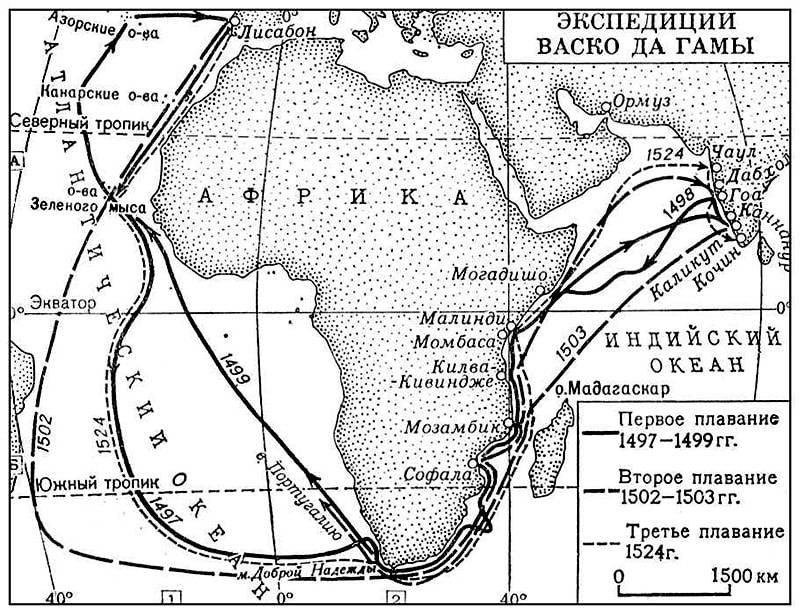
Exhausted by hardship, hunger and scurvy, but feeling like winners, the mariners returned to Lisbon in September 1499. Due to the strong reduction in crews, one of the ships, the San Rafael, had to be burned. Of the more than 170 people who left Portugal in the summer of 1497, only 55 returned. However, despite the loss, the expedition was recognized as successful and fully paid off. The matter is not even in a fair amount of exotic goods brought in - the Portuguese now had a well-known sea route to India, a country of great wealth and the same possibilities, which had already been traversed. Especially for commercial representatives who had firearms at their disposal weapon and the determination to apply it with or without.
Consolidating success
While Vasco da Gama was in the regions far to the east of Portugal, Christopher Columbus set off on his third expedition in the spring of 1498. By this time his star had faded somewhat, the glory had faded, and the smiles sent to him by King Ferdinand and his entourage had lost their former breadth. Despite the stories that seemed convincing, perseverance and perseverance, the admiral and the viceroy of all India did not look so full of weight. The amount of gold and other jewels that were brought from the newly discovered lands overseas was still very modest, and the cost of expansion is still high.
Ferdinand bore numerous foreign policy plans, and he just needed gold. But Spain did not have any alternatives to the business started by Columbus, and Ferdinand once again believed the Genoese and gave the nod to the equipment of the third expedition. In the midst of the Spanish agonizing expectations of the full holds of gold and spices, which Columbus now certainly brought back from India, Vasco da Gama returned to his homeland with convincing evidence of where the desired India actually is.
Portugal has once again bypassed its neighbor in the political-geographical race. While the head of Columbus, overseas, was gathering clouds with the speed of a tropical storm, the Portuguese rightly decided to hurry. An intensive preparation began for a large expedition, which was to not only consolidate the initial successes of Vasco da Gama, but also, if possible, allow them to gain a foothold on the distant and genuine banks, unlike in Columbia, India. Already in January, the head of this large-scale enterprise was appointed 1500 - Pedro Alvares Cabral, who had not been seen anywhere else before, became one. Departure was scheduled for spring.
Продолжение следует ...
Information